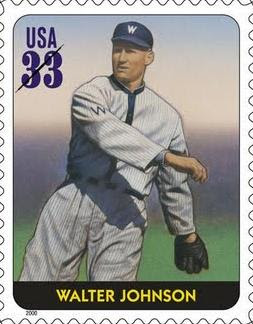
James Emory "Jimmie" Foxx (October 22, 1907 – July 21, 1967), nicknamed "Double X" and "The Beast", was a right-handed American Major League Baseball first baseman and noted power hitter.
Foxx was the second major league player to hit 500 career home runs, after Babe Ruth. Attaining that plateau at age 32 years 336 days, he held the record for youngest to reach 500 for sixty-eight years, until superseded by Alex Rodriguez in 2007. His three career Most Valuable Player awards are tied for second all-time.

Born in Sudlersville, Maryland, Foxx played baseball in high school and dropped out to join a minor league team managed by former Philadelphia Athletics great Frank "Home Run" Baker. Foxx had hoped to pitch or play third base, but since the team was short on catchers, Foxx moved behind the plate.
He immediately drew interest from the Athletics and New York Yankees. Foxx signed with the A's and made his major league debut in 1925 at age 17.

The A's catching duties were already filled by future Hall of Famer Mickey Cochrane, so by 1927, Foxx was splitting time between catching, first base, and the outfield. In 1929, installed as the A's regular first baseman, Foxx had a breakthrough year, batting .354 and hitting 33 home runs.
In 1932, Foxx hit .364, with 58 home runs with 169 RBIs, missing the Triple Crown by just three points in batting average. Boston Red Sox first baseman Dale Alexander hit .367, but in just 454 plate appearances; he would not have won the batting title under current rules, which are based upon 3.1 plate appearances per team games played. Foxx did win the Triple Crown the following season, with a batting average of .356, 163 RBIs, and 48 home runs. He won back-to-back MVP honors in 1932 and 1933.
Seven of the American League's 1937 All-Star players, from left to right Lou Gehrig, Joe Cronin, Bill Dickey, Joe DiMaggio, Charlie Gehringer, Jimmie Foxx, and Hank Greenberg. All seven would eventually be elected to the Hall of Fame.Foxx was one of the three or four most feared sluggers of his era. The great Yankee pitcher Lefty Gomez once said of him, "He has muscles in his hair."
In 1937, Foxx hit a ball into the third deck of the left-field stands at Yankee Stadium in New York, a very rare feat because of the distance and the angle of the stands. Gomez was the pitcher who gave it up, and when asked how far it went, he said, "I don't know, but I do know it took somebody 45 minutes to go up there and get it back."
When the Great Depression fully hit in the early 1930s, A's owner Connie Mack was unable to pay the salaries of his highly paid stars, and was obliged to sell off a number of them. In 1936, Mack sold Foxx's contract to the Boston Red Sox for $150,000, following a contract dispute.
Boston Red SoxFoxx played six years for Boston, including a spectacular 1938 season in which he hit 50 home runs, drove in 175 runs, batted .349, won his third MVP award, and again narrowly missed winning the Triple Crown. Foxx is one of nine players to have won three MVPs; only Barry Bonds (7) has more.
On June 16, 1938, he set an American League record when he walked six times in a game. In 1939 he hit .360, his second-best all-time season batting average. His 50 home runs would remain the single-season record for the Red Sox until David Ortiz hit 54 in 2006.



















